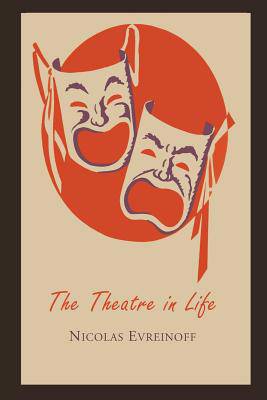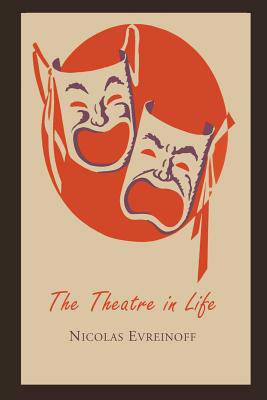
Je cadeautjes zeker op tijd in huis hebben voor de feestdagen? Kom langs in onze winkels en vind het perfecte geschenk!
- Afhalen na 1 uur in een winkel met voorraad
- Gratis thuislevering in België vanaf € 30
- Ruim aanbod met 7 miljoen producten
Je cadeautjes zeker op tijd in huis hebben voor de feestdagen? Kom langs in onze winkels en vind het perfecte geschenk!
- Afhalen na 1 uur in een winkel met voorraad
- Gratis thuislevering in België vanaf € 30
- Ruim aanbod met 7 miljoen producten
Zoeken
Omschrijving
2013 Reprint of 1927 Edition. Exact facsimile of the original edition, not reproduced with Optical Recognition Software. Evreinov argued that the role of theatre was to ape and mimic nature. In his estimation, theatre is everything around us. He pointed out that nature is full of theatrical conventions: desert flowers mimicking the stones; mouse feigning death in order to escape a cat's claws; complicated dances of birds, etc. He viewed theatre as a universal symbol of existence. Evreinov promoted an underlying aesthetic: "To make a theatre of life is the duty of every artist. ... the stage must not borrow so much from life as life borrows from the stage." The director sought to reinvigorate the theatre (and through it life itself) through the rediscovery of the origin of theatre in play. He was influenced by the philosophies of Schopenhauer, Nietzsche and Bergson, and, like Meyerhold, the aesthetics of symbolism and the commedia dell'arte (particularly in its use of mask and spontaneity). Evreinov developed his theatrical theories in An Introduction to Monodrama (1909), The Theatre as Such (1912), The Theatre for Oneself, and Pro Scena Sua (1915).
Specificaties
Betrokkenen
- Auteur(s):
- Uitgeverij:
Inhoud
- Aantal bladzijden:
- 310
- Taal:
- Engels
Eigenschappen
- Productcode (EAN):
- 9781614274223
- Verschijningsdatum:
- 3/04/2013
- Uitvoering:
- Paperback
- Formaat:
- Trade paperback (VS)
- Afmetingen:
- 152 mm x 229 mm
- Gewicht:
- 458 g

Alleen bij Standaard Boekhandel
+ 45 punten op je klantenkaart van Standaard Boekhandel
Beoordelingen
We publiceren alleen reviews die voldoen aan de voorwaarden voor reviews. Bekijk onze voorwaarden voor reviews.









